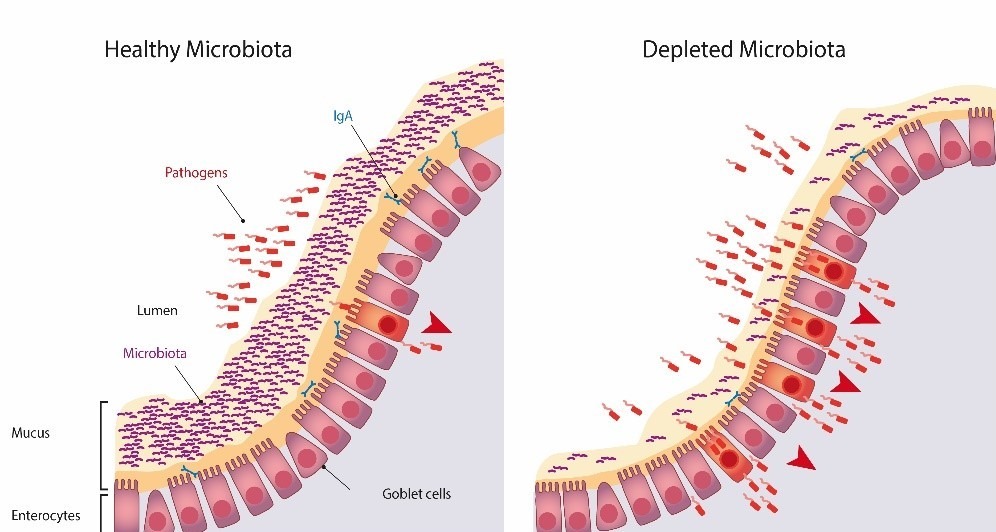Blog | Reading Time 1 minute
Pig Microbiota Insight: Part 3 – The guardian of swine immunity
The swine digestive tract is the major site of exchange between the animal and its environment through feed and water consumption. It is also a major entry route for undesirable microorganisms, such as enteric pathogens. This is why the gut is also a major site of immune surveillance. It is estimated that 70% of the immune cells of the body are found in the gastrointestinal tract.
The gut microbiota plays an important role at three levels of the gut barrier:
- Integrity of the gut lining
- Maintenance of gut villi and crypt
- Protection of the epithelium and maintenance of the tight junctions
- Modulation of the production of mucus by the epithelium
- Competition with pathogens
- Establishment of a non-favorable environment for pathogens (acidification through lactic acid production, production of bacteriostatins, etc.).
- Competition with some undesirable microorganisms for nutrients and attachment sites
- Immune system modulation
- Regulation of the pro- and anti-inflammatory responses
A well balanced, healthy microbiota is one key to preserving gut health at each stage of the production cycle: the sow, the piglet (prevention of neonatal diarrhea), the weanling piglet and the fattening pig.
The supplementation of pig diet with selected probiotic microorganisms, such as Saccharomyces cerevisiae boulardii, has proven benefits on each level of the gut barrier.
Click on the links below to read the other articles in the Pig microbiota insight series.
Part 2 – Key role in digestion
Published Feb 7, 2020 | Updated May 30, 2023
